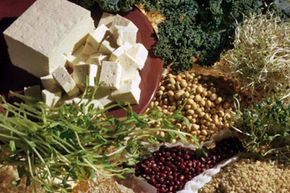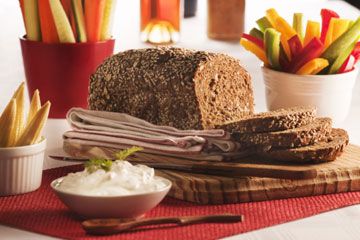If you make a beeline for the meat department every time you go to the market, living lean will require rethinking your options. Meat can still be on the menu in ways we'll get to in a minute, but other choices should be part of the mix, too, including complementary proteins you can mix and match. This will make mealtime more of an adventure and has some surprising benefits, like upping the amount of fiber in your diet. It can also work to introduce your kids to a wide range of ingredients instead of the same old stuff for mealtime.
Before we start, let's list some good sources of complementary, vegetable protein:
- Nuts - walnuts, cashews, almonds, pistachios
- Seeds - sunflower seeds, pumpkin seeds, sesame seeds
- Grains - oats, wheat, rice, barley, corn (bread, pasta, dumplings, biscuits)
- Legumes - soy products, beans, peas, peanuts
Remember, using the items above as ingredients in cooking can provide all nine essential amino acids without your having to head over to the meat department or fishmonger. Just use them in combination. We talked about beans with rice, but peanut butter on whole wheat bread is another popular choice. A good rule of thumb when combining complementary proteins is to match legumes with grains, legumes with nuts (or seeds), or grains with nuts (or seeds). Pound for pound, using grouped complementary proteins to build meals is one of the least expensive options around. In fact, savvy cooks have been doing it for generations with one sneaky twist: They've added just a little meat for variety and flavor.
Soups and stews have historically contained lots of ingredients and been served with or over grains to complete a meal. That tough as shoe leather piece of meat may not be a good entree option, but added to other ingredients and cooked long and slow, it lends its flavor to all those secondary proteins, providing them with a depth and resonance that's completely yummy. Think back on those comfort foods you remember from childhood. How many of them used a little meat or dairy with other ingredients like pasta, beans, peas, rice, barley, lentils or corn? A few generations ago, frugal cooking was the norm instead of the exception. Grab granny's recipes and rediscover an American tradition.
Setting the topic of secondary proteins aside for a moment, there are still inexpensive ways to add primary protein sources to your diet and have enough money left over to make the house payment. Here are some good bets:
- Eggs - They come in their own handy containers and provide 7 grams of protein each. Eggs have gotten a bad rap in the last few years. They aren't the titans of cholesterol we thought they were, and they're one of the most inexpensive protein options in your friendly neighborhood market. Just be sure to cook eggs thoroughly before you serve them to avoid problems with Salmonella contamination. The whites should be firm and reach 160 degrees Fahrenheit.
- Tuna - Canned tuna is a cheap source of protein that will increase the amount of heart healthy omega-3 fatty acids to your diet. There are around 30 grams of protein in a 5-ounce can of tuna. Current guidelines published by the U.S. Environmental Protection Agency (EPA) and the U.S. Food and Drug Administration (FDA) recommend limiting the amount of tuna consumed by young children and pregnant or nursing women to 12 ounces per week. (Light chunk tuna typically contains less mercury than albacore tuna.)
- Milk - The white stuff has about 8 grams of protein per 8-ounce cup as well as around 20 other important nutrients. The best proteins are also lean, so choose low- or non-fat milk varieties.
- Yogurt - If milk isn't your refreshment of choice, get your dairy protein from yogurt. An 8-ounce container of regular yogurt will provide you with 11 grams of protein, and if you go for Greek yogurt instead, you can almost double the protein content. Greek yogurt is more expensive than regular yogurt, but the added protein may be an enticing inducement to spend a little more.
- Ground turkey - If you watch for sales, ground turkey can be quite a bargain. You can sometimes pick up a 1 pound chub for a little over a dollar and use it as a respectable substitute for ground beef in dishes like meat loaf, chili, meatballs and even burgers. A 3.5-ounce serving of ground turkey contains around 25 grams of protein. Check the label before you buy, though. Bargain brands may use a larger skin-to-meat ratio for a fattier product.

